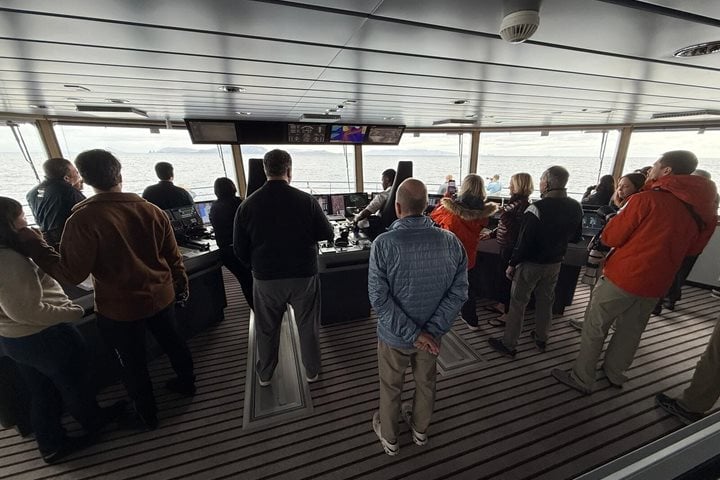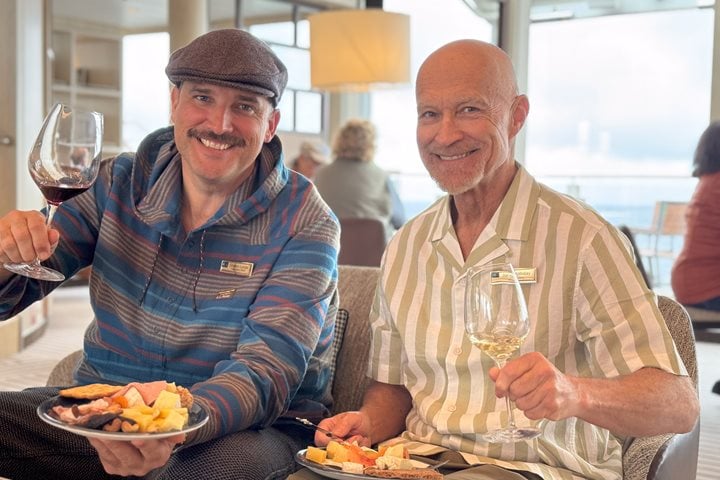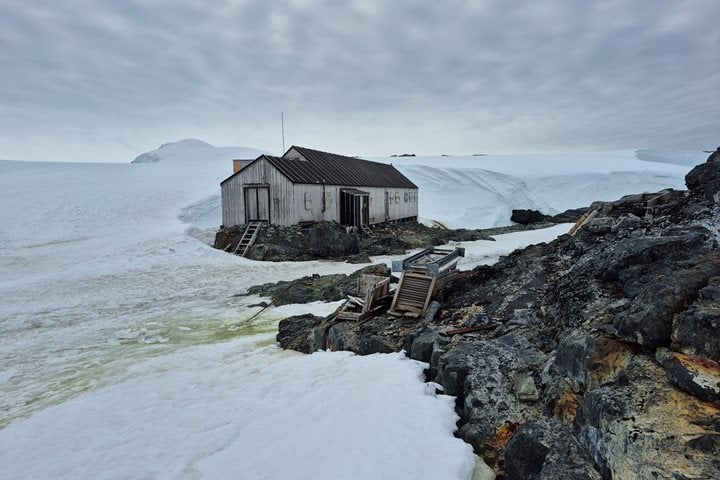Today we woke up to calm seas well on our way across the Drake Passage, Cape Horn, well out of sight, and to the west. Since today was a sea day, the agenda was packed with a variety of talks and presentations. After introductions by the Expedition Team, we had the opportunity to learn more about the National Geographic - Lindblad Alliance.
Under the guidance of Eric Guth, our National Geographic certified photo instructor and naturalist, we hopefully were able to take away tips to maximize the use of our image-capturing devices. This introduction to digital photography included breakout sessions with the photography team, giving us the chance to work on refining skills that will be needed for the countless images that will be captured during the expedition. We should remember the triangle: Aperture, ISO & Shutter Speed.
The following are some tips to remember:
Aperture -the higher the number, the more will be in focus in the background, conversely a smaller aperture gives us a shallower depth of field.
ISO - Refers to how sensitive our sensor is to the light. Keeping in mind, that the higher the number, the grainier the picture.
Shutter Speed – The higher the number, the faster the shutter will close.
Lighting is critical. We should consider how lighting will affect the composition. For example, overcast skies are great for portraits because facial features are softened.
During our time in Antarctica, ideal lighting occurs in the very late evening (22.00 hours) and very early in the morning (04.00 hours).
After lunch, we were treated to an informative talk on the “Seabirds of the Southern Ocean” by naturalist Eduardo Shaw. He gave us tips for identifying the seabirds of the Southern Ocean. Following the presentation, we had the opportunity to step out on the open decks for some bird watching. The timing could not have been better as we saw our first penguins of the expedition were sighted, chinstrap penguins porpoising through the water. We also were enthralled with the prions, various petrels and the magnificent wandering albatross, the largest flying bird on the planet.
Later in the day, naturalist Sheri Bluestein, gave us a presentation on the Antarctic Treaty, which establishes that Antarctica be a place of peace and science. We learned how this remarkable document came to be and how it is being implemented to this day. Afterwards there were chances to ask questions which enhanced our understanding as well as inviting us to be advocates for the treaty, bearing in mind that the continent now receives over forty thousand visitors each summer season. During recap we also learned that over the last few hours we had crossed the Antarctic Convergence, this is the boundary between the much colder waters of the Southern Ocean and those of the Indian, Pacific and Atlantic Oceans.
Before dinner, we gathered in the lounge for the first recap and briefing of the expedition. This is a time to share our adventures as well as the chance to learn a little more about various topics as well as to learn what adventures may await us the following day. Today we learned more about the importance of krill in the food chain, the plant life in the Fueguian forests and Antarctica, and the care needed to avoid bringing foreign species to Antarctica.
Excitement ramped up during dinner time as fin whales were spotted from the dining room windows and not long after, the first iceberg was spotted in the distance straight ahead. As the ship moved ever closer to the iceberg, we excitedly rushed to the decks to get a closer look and capture the moment. Soon after, cheers were heard throughout the ship as The National Geographic Explorer crossed the political boundary, 60°S; we had arrived.







